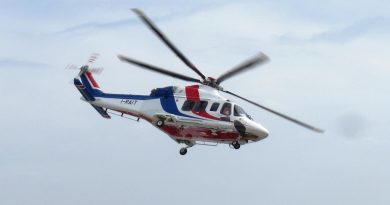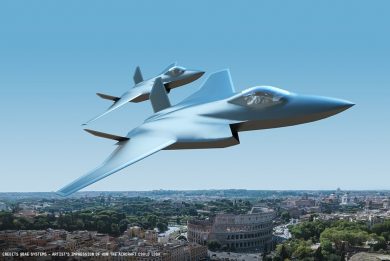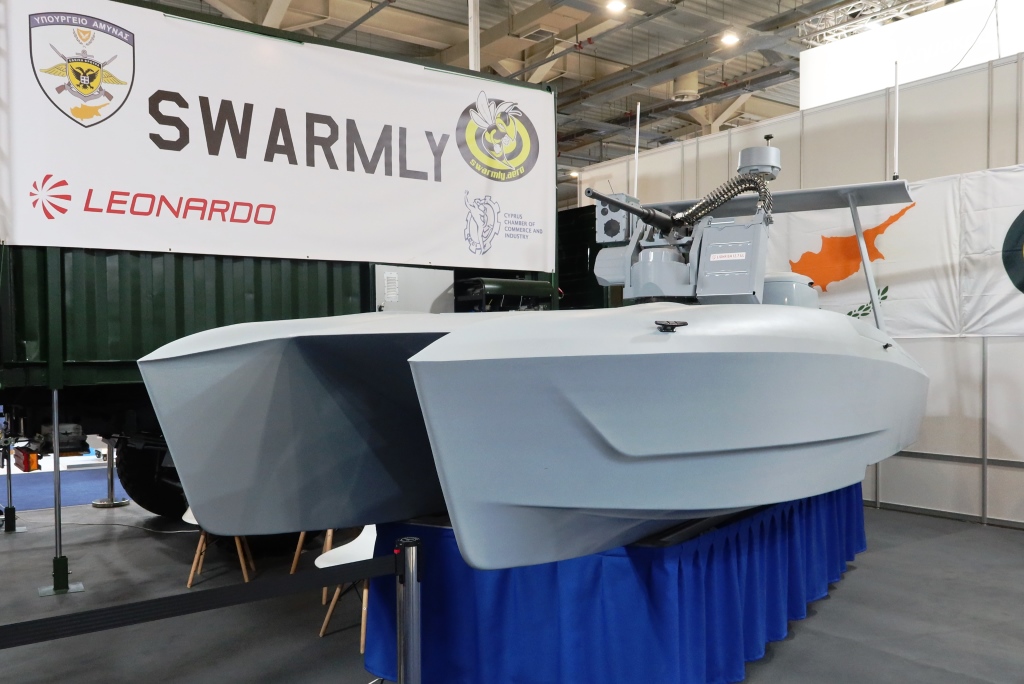
DEFEA 2023 – Swarmly and Leonardo join forces on the B5 Hydra armed USV
Shown for the first time at DEFEA 2023, the B5 Hydra USV by Swarmly was fitted with Leonardo Lionfish UL giving birth to an armed unmanned surface vehicle capable of high speed at sea
In the air armed unmanned systems have now been operational for some time, while apparently unmanned ground systems are still in the start-up phase, due to tactical as well as ethical issues. What about naval unmanned systems? Here too not many armed ones are around, however as naval scenarios are less densely populated compared to land ones, armed USV s are appearing.
At DEFEA 2023, the Athens exhibition that took place May 9-12, Swarmly, a Cyprus-based company mainly active in the aeronautical field, unveiled the armed version of its B5 Hydra USV. The project is carried out in cooperation with Leonardo of Italy, the latter providing its Lionfish 12.7 Ultra Light remotely operated turret. This has been integrated on the catamaran boat and will soon start sea trials.
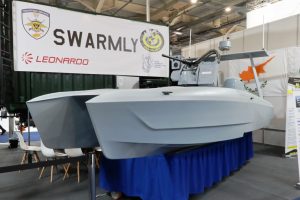
The B5 Hydra USV is a catamaran with an overall length of 6.052 metres and a width of 2.365 metres, the hull maximum height above waterline being 2.1 meters. The hull is made of Kevlar layers and can withstand a 7.62×39 mm ball round. If needed, the two hulls can be filled with foam, thus ensuring buoyancy even if penetrated by small arms fire. In the standard configuration the boat is very light, only 120 kg, to which we must add the outboard engines, which can be selected by the customer, the boat exhibited at DEFEA being equipped with two Mercury 450 hp. This allows it to reach up to 160 km/h, cruise speed being 120 km/h while minimum speed is 5 km/h. At cruise speed the UVS can operate for 10 hours, maximum total range being 1,200 km.
A wing located at the rear can be trimmed in order to maintain the propellers in the water when “flying” at high speed. The rear superstructure also hosts two antennas used by the data link, communications range using MANET being 200 km, using for example one of the UAS developed by Swarmly, the 11-hour endurance H12 or the smaller 3-hour endurance H10 acting as relay; to further expand the range a SATCOM system can be installed.
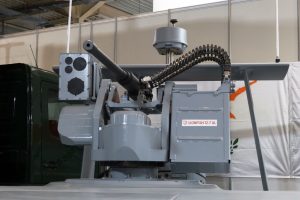
With a maximum weight of 1,200 kg the B5 Hydra has a payload around 600 kg. This is well enough to allow the installation of Leonardo’s Lionfish 12.7 Ultra Light mount. Remotely controlled and armed with a Browning 12.7×99 M2HB heavy machine gun, it weighs less than 180 kg without ammunition, the typical load being of 250 rounds which adds some 100 kg. The training arc is ± 155° while the elevation arc is –20°/+70°, training and elevation speed being 60°/s while acceleration is 150°/s2. The mount is fitted with an electro-optical suite with day and night cameras, with respective detection/recognition/identification range of 9.5/4.8/2.7 km and 6.3/3.0/1.5 km, and with a laser rangefinder with a 5.5 km range.
In terms of logistic footprint, the B5 Hydra can fit into a 20-foot container while two can be transported in a 40-foot one.
For the time being the B5 Hydra is manually controlled, the console integrating two stations, one for the boat pilot and one for the gunner. Swarmly finished the integration of the Lionfish on board its USV, and trials will take place in June in Italy, possibly at Livorno where Leonardo has one of its facilities.
Besides being armed with an automatic weapon, Swarmly underlines that the B5 Hydra can eventually also be used in suicide attack mode with its two hulls filled with explosive, which would allow it to attack ships of considerable dimensions. In terms of weaponisation the cooperation between Swarmly and Leonardo might expand beyond the Lionfish, the Black Scorpion lightweight torpedo, which weighs less than 20 kg, being another possible addition to the Cypriot-designed USV.
Photos by P. Valpolini

